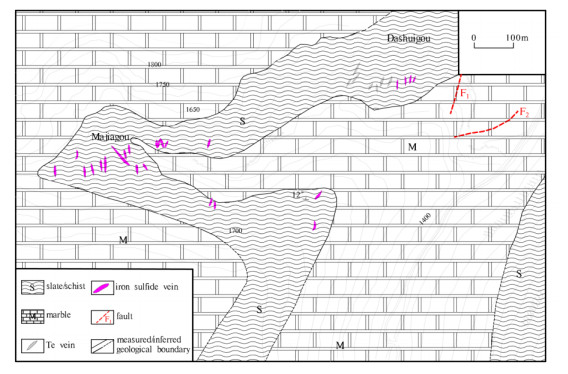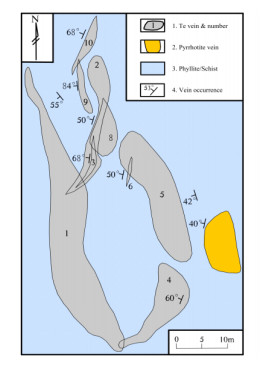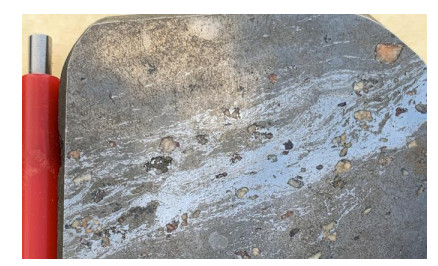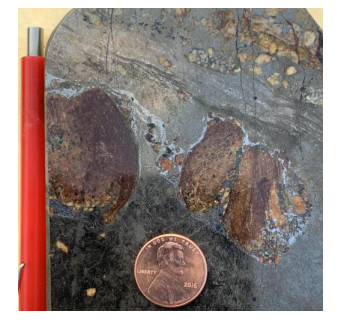1.
Introduction
The concept of lightlike submanifolds in geometry was initially established and expounded upon in a work produced by Duggal and Bejancu [1]. A nondegenerate screen distribution was employed in order to produce a nonintersecting lightlike transversal vector bundle of the tangent bundle. They defined the CR-lightlike submanifold as a generalization of lightlike real hypersurfaces of indefinite Kaehler manifolds and showed that CR-lightlike submanifolds do not contain invariant and totally real lightlike submanifolds. Further, they defined and studied GCR-lightlike submanifolds of Kaehler manifolds as an umbrella of invariant submanifolds, screen real submanifolds, and CR-lightlike and SCR-lightlike submanifolds in [2,3], respectively. Subsequently, B. Sahin and R. Gunes investigated geodesic property of CR-lightlike submanifolds [4] and the integrability of distributions in CR-lightlike submanifolds [5]. In the year 2010, Duggal and Sahin published a book [6]pertaining to the field of differential geometry, specifically focusing on the study of lightlike submanifolds. This book provides a comprehensive examination of recent advancements in lightlike geometry, encompassing novel geometric findings, accompanied by rigorous proofs, and exploring their practical implications in the field of mathematical physics. The investigation of the geometric properties of lightlike hypersurfaces and lightlike submanifolds has been the subject of research in several studies (see [7,8,9,10,11,12,13,14]).
Crasmareanu and Hretcanu[15] created a special example of polynomial structure [16] on a differentiable manifold, and it is known as the golden structure (¯M,g). Hretcanu C. E. [17] explored Riemannian submanifolds with the golden structure. M. Ahmad and M. A. Qayyoom studied geometrical properties of Riemannian submanifolds with golden structure [18,19,20,21] and metallic structure [22,23]. The integrability of golden structures was examined by A. Gizer et al. [24]. Lightlike hypersurfaces of a golden semi-Riemannian manifold was investigated by N. Poyraz and E. Yasar [25]. The golden structure was also explored in the studies [26,27,28,29].
In this research, we investigate the CR-lightlike submanifolds of a golden semi-Riemannian manifold, drawing inspiration from the aforementioned studies. This paper has the following outlines: Some preliminaries of CR-lightlike submanifolds are defined in Section 2. We establish a number of properties of CR-lightlike submanifolds on golden semi-Riemannian manifolds in Section 3. In Section 4, we look into several CR-lightlike submanifolds characteristics that are totally umbilical. We provide a complex illustration of CR-lightlike submanifolds of a golden semi-Riemannian manifold in the final section.
2.
Opening statements
Assume that (¯ℵ,g) is a semi-Riemannian manifold with (k+j)-dimension, k,j≥1, and g as a semi-Riemannian metric on ¯ℵ. We suppose that ¯ℵ is not a Riemannian manifold and the symbol q stands for the constant index of g.
[15] Let ¯ℵ be endowed with a tensor field ψ of type (1,1) such that
where I represents the identity transformation on Γ(Υ¯ℵ). The structure ψ is referred to as a golden structure. A metric g is considered ψ-compatible if
for all γ, ζ vector fields on Γ(Υ¯ℵ), then (¯ℵ,g,ψ) is called a golden Riemannian manifold. If we substitute ψγ into γ in (2.2), then from (2.1) we have
for any γ,ζ∈Γ(Υ¯ℵ).
If (¯ℵ,g,ψ) is a golden Riemannian manifold and ψ is parallel with regard to the Levi-Civita connection ¯∇ on ¯ℵ:
then (¯ℵ,g,ψ) is referred to as a semi-Riemannian manifold with locally golden properties.
The golden structure is the particular case of metallic structure [22,23] with p=1, q=1 defined by
where p and q are positive integers.
[1] Consider the case where ℵ is a lightlike submanifold of k of ¯ℵ. There is the radical distribution, or Rad(Υℵ), on ℵ that applies to this situation such that Rad(Υℵ)=Υℵ∩Υℵ⊥, ∀ p∈ℵ. Since RadΥℵ has rank r≥0, ℵ is referred to as an r-lightlike submanifold of ¯ℵ. Assume that ℵ is a submanifold of ℵ that is r-lightlike. A screen distribution is what we refer to as the complementary distribution of a Rad distribution on Υℵ, then
As S(Υℵ) is a nondegenerate vector sub-bundle of Υ¯ℵ|ℵ, we have
where S(Υℵ)⊥ consists of the orthogonal vector sub-bundle that is complementary to S(Υℵ) in Υ¯ℵ|ℵ. S(Υℵ),S(Υℵ⊥) is an orthogonal direct decomposition, and they are nondegenerate.
Let the vector bundle
Thus,
Assume that the Levi-Civita connection is ¯∇ on ¯ℵ. We have
and
where {∇γζ,Ahγ} and {h(γ,ζ),∇⊥γh} belongs to Γ(Υℵ) and Γ(tr(Υℵ)), respectively.
Using projection L:tr(Υℵ)→ltr(Υℵ), and S:tr(Υℵ)→S(Υℵ⊥), we have
and
for any γ,ζ∈Γ(Υℵ),ℵ∈Γ(ltr(Υℵ)), and χ∈Γ(S(Υℵ⊥)), where hl(γ,ζ)=Lh(γ,ζ),hs(γ,ζ)=Sh(γ,ζ),∇lγℵ,λl(γ,χ)∈Γ(ltr(Tℵ)),∇sγλs(γ,ℵ)∈Γ(S(Υℵ⊥)), and ∇γζ,Aℵγ,Aχγ∈Γ(Υℵ).
The projection morphism of Υℵ on the screen is represented by P, and we take the distribution into consideration.
where γ,ζ∈Γ(Υℵ),ξ∈Γ(Rad(Υℵ)).
Thus, we have the subsequent equation.
Consider that ¯∇ is a metric connection. We get
Using the characteristics of a linear connection, we can obtain
Based on the description of a CR-lightlike submanifold in [4], we have
where λ=Rad(Υℵ)⊥ψRad(Υℵ)⊥λ0.
S and Q stand for the projection on λ and λ′, respectively, then
for γ,ζ∈Γ(Υℵ), where fγ=ψSγ and wγ=ψQγ.
On the other hand, we have
for any ζ∈Γ(tr(Υℵ)), Bζ∈Γ(Υℵ) and Cζ∈Γ(tr(Υℵ)), unless ℵ1 and ℵ2 are denoted as ψL1 and ψL2, respectively.
Lemma 2.1. Assume that the screen distribution is totally geodesic and that ℵ is a CR-lightlike submanifold of the golden semi-Riemannian manifold, then ∇γζ∈Γ(S(ΥN)), where γ,ζ∈Γ(S(Υℵ)).
Proof. For γ,ζ∈Γ(S(Υℵ)),
Using (2.8),
Using (2.11),
Since screen distribution is totally geodesic, h∗(γ,ζ)=0,
Using Lemma 1.2 in [1] p.g. 142, we have
where γ,ζ∈Γ(S(Υℵ)).
Theorem 2.2. Assume that ℵ is a locally golden semi-Riemannian manifold ¯ℵ with CR-lightlike properties, then ∇γψγ=ψ∇γγ for γ∈Γ(λ0).
Proof. Assume that γ,ζ∈Γ(λ0). Using (2.5), we have
Nondegeneracy of λ0 implies
where γ∈Γ(λ0).
3.
Geodesic CR-lightlike submanifolds
Definition 3.1. [4] A CR-lightlike submanifold of a golden semi-Riemannian manifold is mixed geodesic if h satisfies
where h stands for second fundamental form, γ∈Γ(λ), and α∈Γ(λ′).
For γ,ζ∈Γ(λ) and α,β∈Γ(λ′) if
and
then it is known as λ-geodesic and λ′-geodesic, respectively.
Theorem 3.2. Assume ℵ is a CR-lightlike submanifold of ¯ℵ, which is a golden semi-Riemannian manifold. ℵ is totally geodesic if
and
for α,β∈Γ(Υℵ),ξ∈Γ(Rad(Υℵ)), and χ∈Γ(S(Υℵ⊥)).
Proof. Since ℵ is totally geodesic, then
for γ,ζ∈Γ(Υℵ).
We know that h(γ,ζ)=0 if
and
Since g(h(γ,ζ),ξ)=0, we have
Similarly,
Since g(h(γ,ζ),χ)=0, we get
for χ∈Γ(S(Υℵ⊥)).
Lemma 3.3. Assume that ¯ℵ is a golden semi-Riemannian manifold whose submanifold ℵ is CR-lightlike, then
for γ∈Γ(λ),ζ∈Γ(λ′) and χ∈Γ(S(Υℵ⊥)).
Proof. Using (2.5), we get
From (2.9), it follows that
where γ∈Γ(λ),ζ∈Γ(λ′),χ∈Γ(S(Υℵ⊥)).
Theorem 3.4. Assume that ℵ is a CR-lightlike submanifold of the golden semi-Riemannian manifold and ¯ℵ is mixed geodesic if
and
for γ∈Γ(λ),ξ∈Γ(Rad(Υℵ)), and χ∈Γ(S(Υℵ⊥)).
Proof. For γ∈Γ(λ),ζ∈Γ(λ′), and χ∈Γ(S(Υℵ⊥)), we get
Using (2.5),
Again using (2.5), we obtain
Using (2.10), we have
Since the CR-lightlike submanifold ℵ is mixed geodesic, we have
where γ∈Γ(λ),ζ∈Γ(λ′).
From (2.5), we get
From (2.9), we get
Since, ℵ is mixed geodesic, then g(h(γ,ζ),χ)=0
Theorem 3.5. Suppose that ℵ is a CR-lightlike submanifold of a golden semi-Riemannian manifold ¯ℵ, then ℵ is λ′-geodesic if Aχη and A∗ξη have no component in ℵ2⊥ψRad(Υℵ) for η∈Γ(λ′),ξ∈Γ(Rad(Υℵ)), and χ∈Γ(S(Υℵ⊥)).
Proof. From (2.5), we obtain
where χ,β∈Γ(λ′).
Using (2.9), we have
Since ℵ is λ′-geodesic, then g(h(η,β),χ)=0.
From (3.1), we get
Now,
From (2.10), we get
Since ℵ is λ′- geodesic, then
Thus, Aχη and A∗ξη have no component in M2⊥ψRad(Υℵ).
Lemma 3.6. Assume that ¯ℵ is a golden semi-Riemannian manifold that has a CR-lightlike submanifold ℵ. Due to the distribution's integrability, the following criteria hold.
(ⅰ) ψg(λl(ψγ,χ),ζ)−g(λl(γ,χ),ψζ)=g(Aχψγ,ζ)−g(Aχγ,ψζ),
(ⅱ) g(λl(ψγ),ξ)=g(Aχγ,ψξ),
(ⅲ) g(λl(γ,χ),ξ)=g(Aχψγ,ψξ)−g(Aχγ,ψξ),
where γ,ζ∈Γ(Υℵ),ξ∈Γ(Rad(Υℵ)), and χ∈Γ(S(Υℵ⊥)).
Proof. From Eq (2.9), we obtain
Using (2.5), we get
Again, using (2.5), we get
Using (2.9), we have
(ⅱ) Using (2.9), we have
Using (2.10), we get
(ⅲ) Replacing ζ by ψξ in (ⅰ), we have
Using Definition 2.1 in [18] p.g. 9, we get
4.
Totally umbilical CR-lightlike submanifolds
Definition 4.1. [12] A CR-lightlike submanifold of a golden semi-Riemannian manifold is totally umbilical if there is a smooth transversal vector field H∈tr Γ(Υℵ) that satisfies
where h is stands for second fundamental form and χ, η∈ Γ(Υℵ).
Theorem 4.2. Assume that the screen distribution is totally geodesic and that ℵ is a totally umbilical CR-lightlike submanifold of the golden semi-Riemannian manifold ¯ℵ, then
Proof. Given that ¯ℵ is a golden semi-Riemannian manifold,
Using (2.5) and (2.6), we have
Interchanging η and χ, we obtain
Subtracting Eqs (4.1) and (4.2), we get
Taking the inner product with γ∈Γ(λ0) in (4.3), we have
Now,
Since ψ is parallel to ¯∇, i.e., ¯∇γψ=0,
Using (2.7), we have
Since ℵ is a totally umbilical CR-lightlike submanifold and the screen distribution is totally geodesic,
and
where χ∈Γ(λ′) and γ∈Γ(λ0).
From (4.5), we have
From Lemma 2.1, we get
Similarly,
Using (4.4), we have
Since λ0 is nondegenerate,
Theorem 4.3. Let ℵ be the totally umbilical CR-lightlike submanifold of the golden semi-Riemannian manifold ¯ℵ. Consequently, ℵ's sectional curvature, which is CR-lightlike, vanishes, resulting in ¯K(π)=0, for the entire CR-lightlike section π.
Proof. We know that ℵ is a totally umbilical CR-lightlike submanifold of ¯ℵ, then from (2.13) and (2.14),
for a CR-lightlike section π=γ∧ω,γ∈Γ(λ0),ω∈Γ(λ′).
From (2.12), we have (∇Ug)(ζ,ω)=0. Therefore, from (4.6) and (4.7), we get
Now, from (4.8) and (4.9), we get
For any β∈Γ(tr(Υℵ)), from Equation (4.10), we get
For any unit vectors γ∈Γ(λ) and ω∈Γ(λ′), we have
We have
where
or
i.e.,
for all CR-sections π.
5.
Example
Example 5.1. We consider a semi-Riemannian manifold R62 and a submanifold ℵ of co-dimension 2 in R62, given by equations
where α∈R−{π2+kπ; k∈z}. The structure on R62 is defined by
Now,
It follows that (R62,ψ) is a golden semi-Reimannian manifold.
The tangent bundle Υℵ is spanned by
Thus, ℵ is a 1-lightlike submanifold of R62 with RadΥℵ=Span{X0}. Using golden structure of R62, we obtain that X1=ψ(X0). Thus, ψ(RadΥℵ) is a distribution on ℵ. Hence, the ℵ is a CR-lightlike submanifold.
6.
Conclusions
In general relativity, particularly in the context of the black hole theory, lightlike geometry finds its uses. An investigation is made into the geometry of the ℵ golden semi-Riemannian manifolds that are CR-lightlike in nature. There are many intriguing findings on completely umbilical and completely geodesic CR-lightlike submanifolds that are examined. We present a required condition for a CR-lightlike submanifold to be completely geodesic. Moreover, it is demonstrated that the sectional curvature K of an entirely umbilical CR-lightlike submanifold ℵ of a golden semi-Riemannian manifold ¯ℵ disappears.
Use of AI tools declaration
The authors declare they have not used Artificial Intelligence (AI) tools in the creation of this article.
Acknowledgments
The present work (manuscript number IU/R&D/2022-MCN0001708) received financial assistance from Integral University in Lucknow, India as a part of the seed money project IUL/IIRC/SMP/2021/010. All of the authors would like to express their gratitude to the university for this support. The authors are highly grateful to editors and referees for their valuable comments and suggestions for improving the paper. The present manuscript represents the corrected version of preprint 10.48550/arXiv.2210.10445. The revised version incorporates the identities of all those who have made contributions, taking into account their respective skills and understanding.
Conflict of interest
Authors have no conflict of interests.


















 DownLoad:
DownLoad: